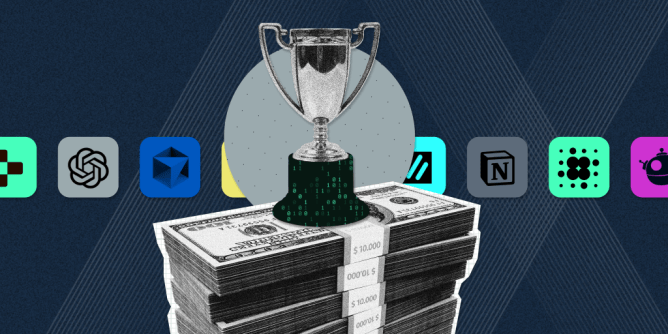On Thursday, Andreessen Horowitz released its first AI Spending Report in partnership with the fintech firm Mercury. Using transaction data from Mercury, the report analyzes the top 50 AI-native application layer companies that startups are spending money on, similar to a previously published list of top consumer apps. a16z partners Olivia Moore and Seema Amble say the data shows companies are still adopting a range of different AI products for certain tasks, and new apps are rising and falling very quickly.
They noted there is a proliferation of tools and that the market has not just coalesced around one or two in each category. The report also shows a lot of spending on human augmentors or copilots that can help boost productivity among the workforce, which suggests startups are not ready to fully shift into agentic workflows. Amble said that as computer use becomes more of a mode and the ability to build end-to-end agentic flows improves, that shift will happen, leading to fewer copilots and more end-to-end agent tools.
Unsurprisingly, the top of the list was dominated by major labs, with OpenAI taking the top slot and Anthropic following at number two. Vibe-coding tools were also well represented, with Replit at number three and Lovable at number eighteen. Cursor landed at number six and Emergent at number forty-eight. Cognition, which operates more enterprise-oriented coding tools, was at number thirty-four.
When a16z produced a similar list for consumer habits, Lovable ranked much higher than Replit on pure traffic alone because many people were using it to create projects. However, startups are not spending as much money on Lovable as they are on Replit, in part because of a lack of enterprise features. The variety of companies on the list seems to suggest there is room for plenty of different companies at once.
Moore said it is an open question for the future of vibe coding whether the space will consolidate into one platform or if several large businesses for different applications will emerge. Moore was also surprised to see startups adopting consumer-oriented tools like CapCut and Midjourney. She observed that many consumer companies are being pulled into the enterprise space faster because they create such delightful tools that individuals adopt and then bring into their teams and workplaces.
Horizontal applications overall made up at least sixty percent of the names on the list, and forty percent consisted of vertical applications. The most popular vertical software companies fell into three categories: sales, recruiting, and customer service. The report also found AI making progress in many sectors that previous generations of startups had struggled to crack. Moore noted that what might have previously been service firms or consultancies are now software companies in the age of AI.
Amble gave Crosby Legal as an example, which can quickly review a legal contract for a user, replacing what would have once been a meeting with an in-house general counsel. She said that right now, most tools are used to aid employees, like a co-pilot, in making decisions faster, rather than replacing entire workforces with automated workers. She added that as the technology improves and companies are able to build out full agent co-workers, the mix will shift more toward end-to-end agents and away from co-pilots. AI tools can already do work like outreach faster than a human can.
There were also many note takers on the list, such as Otter.ai, Retell AI, and HappyScribe, with no single option dominating. This illustrates Amble’s point that no one product has yet dominated the market; instead, startups are still picking their own flavor to see what tools they like best. This is also good for employees, who, with so many options, can pick what applications help them work best rather than using a one-size-fits-all product pushed down from management.
The last major finding in the report was the increasing intertwining of consumer and enterprise businesses. People are bringing the personal applications they use at home to work, and founders are using their favorite personal applications to help build their businesses. Previously, there would have been a clear delineation between the two with a standard stack for building a startup. Amble and Moore cited Canva as an example of a popular consumer app that also has a sizable enterprise audience. It took years for Canva to add an enterprise plan, but as individual and enterprise use cases become harder to distinguish, companies are more willing to blend the two.
Amble stated that a company’s total addressable market is no longer one or the other, but it can sell into both. She said companies building these products might also professionalize faster, meaning building out enterprise teams like go-to-market, sales, and support so they can start accruing enterprise revenue sooner rather than depending solely on individual consumers.
Moore and Amble expect the list to change quickly in the coming years. Older companies are now launching AI features to stay relevant, while new entrants arrive with new ideas. Amble remarked that legacy now means what was here twelve months ago, and if the report is pulled again in twelve months, the same note-taking apps may not even be on the list, as there could be a whole new set.

